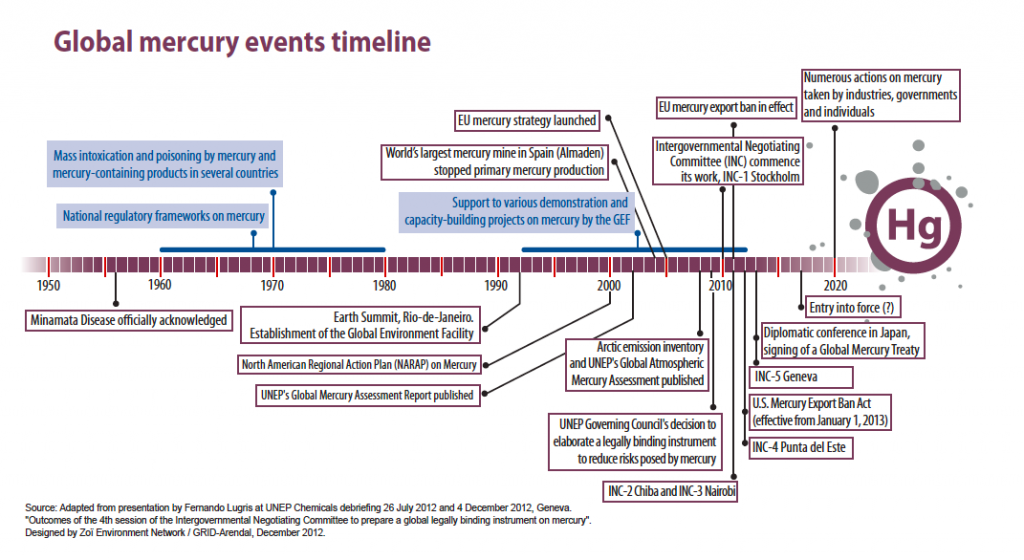By: Noelle Selin
In previous posts, we looked at the evolution of international mercury policy in the 1970s and 1980s-1990s. By the 2000s, countries began to realize that addressing the mercury problem would require global-scale action.

- Timeline of global mercury events from the UNEP “Time to Act” report
The process towards a global treaty began with a scientific assessment report, the 2002 Global Mercury Assessment. A main conclusion of that assessment was that there was sufficient evidence of significant global adverse impacts to warrant international action to reduce the risks to human health and/or the environment arising from the release of mercury into the environment. In 2003, in response to this report, the UNEP Governing Council launched a voluntary programme to address mercury. Between 2003 and 2009, this programme organized a series of awareness-raising workshops, developed guidance and training materials, and established a clearinghouse for mercury-related information. Much of this work was conducted under the auspices of mercury partnerships, which began in 2005 (see our blog post on that topic).
The UNEP Governing Council in 2009 established a mandate to begin negotiations for a global, legally-binding mercury treaty [pdf]. An ad-hoc open-ended working group met to prepare for the beginning of negotiations in 2009 in Bangkok. The Intergovernmental Negotiating Committee process began with a first meeting in Stockholm in June 2010. A second meeting was held in Chiba, Japan in January 2011, a third in Nairobi in November 2011, and a fourth in Punta del Este, Uruguay in July 2012. We are now in Geneva for the fifth and (hopefully) final session, before a treaty is expected be signed in Minamata, Japan in October 2013. More information about the negotiating process to date is available from the Earth Negotiations Bulletin.
